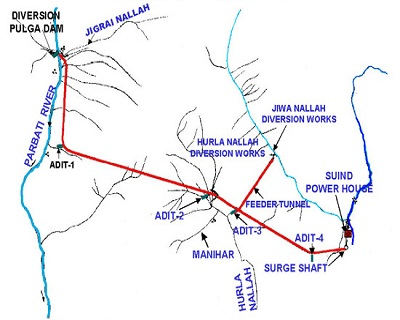




Disclaimer: Copyright infringement not intended.
Tamil Nadu has designated Kasampatty sacred grove as a Biodiversity Heritage Site recognizing its ecological & cultural significance following recommendation of Dindigul Collector & Tamil Nadu Biodiversity Board.
|
Parameter |
Details |
|
Name |
(Veera Kovil Sacred Grove) |
|
Location |
Kasampatti village, Rediyapatty Panchayat, Dindigul District, Tamil Nadu |
|
Total Area |
4.97 hectares |
|
Proximity to Reserves |
Near Alagarmalai Reserve Forest, surrounded by mango plantations |
|
Government Status |
Declared Biodiversity Heritage Site (BHS) on March 27, 2025, under Biological Diversity Act, 2002 |
|
Significance |
1. Ecological hotspot with high biodiversity |
|
Biodiversity |
48 plant species (trees, shrubs, herbs) |
|
Role in Conservation |
1. Preserves rare & endemic species |
|
Cultural Value |
Locals worship at Veera Kovil Temple & protect grove as a sacred space |
|
Key Authorities |
Tamil Nadu Biodiversity Board, Dindigul District Administration, Local Panchayat |
|
Notification Process |
1. Dindigul Collector’s recommendation |
|
Restrictions on Use |
No strict restrictions; local community manages & decides conservation practices |
|
Tamil Nadu’s 2nd BHS |
1st: Arittapatti Biodiversity Heritage Site (Madurai, 2022) |
|
Parameter |
Details |
|
Definition |
Areas with high biodiversity, cultural importance, or ecological value, declared under Section 37 of Biological Diversity Act, 2002. |
|
Purpose |
1. Protect rich ecosystems & endangered species |
|
Legal Framework |
Biological Diversity Act, 2002 allows State Governments to declare BHS in consultation with local bodies. |
|
Authority |
State Governments, in consultation with National Biodiversity Authority (NBA) & Local Panchayats. |
|
Criteria for BHS |
Rare/endangered species |
|
Total BHS in India |
40+ (as of 2025) |
|
First BHS in India |
Nallur Tamarind Grove, Karnataka (2007) |
|
Major BHS Examples |
1. Nallur Tamarind Grove (Karnataka) |
|
Tamil Nadu’s BHS Sites |
1. Arittapatti Biodiversity Heritage Site (Madurai, 2022) |
|
Management Approach |
Community-led conservation |
|
Importance of BHS |
1. Climate Regulation – Helps in carbon sequestration & microclimate control. |
|
State |
Biodiversity Heritage Site |
Location |
Significance |
|
Karnataka |
Nallur Tamarind Grove |
Bengaluru, Devanahalli |
Believed to be a relic of Chola Dynasty, featuring ancient tamarind trees. |
|
Hogrekan |
Chikmagalur |
Shola vegetation serving as a wildlife corridor between Kudremukha & Bhadra Wildlife Sanctuaries. |
|
|
University of Agricultural Sciences Campus |
Bengaluru |
Green area housing diverse flora & fauna. |
|
|
Ambaraguda |
Shivamogga |
Shola vegetation located between Sharavathi & Someshwara Wildlife Sanctuaries. |
|
|
Kerala |
Asramam |
Kollam |
Hosts rare mangrove species & critically endangered trees; part of Ashtamudi Lake ecosystem. |
|
Pannivelichira |
Pathanamthitta, Mallappuzhassery |
Wetland ecosystem supporting migratory & endemic birds; used for irrigation. |
|
|
Madhya Pradesh |
Naro Hills |
Satna |
Geologically unique area supporting diverse ecosystems & species. |
|
Amarkantak |
Anuppur |
Highest peak of Maikal range; major watershed of peninsular India. |
|
|
Patalkot |
Chhindwara, Tamia |
Ancient 1,700-feet deep valley with rare plant species; ecosystem over 6 million years old. |
|
|
Maharashtra |
Glory of Allapalli |
Gadchiroli |
Reserved forest with biological, ethnic & historical importance. |
|
Anjarle & Velas Beaches |
Ratnagiri |
Nesting sites for Olive Ridley turtles. |
|
|
Landor Khori Forest |
Jalgaon |
Natural forest home to 190 bird species & 24 mammal species. |
|
|
Wardham Park |
Gadchiroli, Sironcha |
Contains ancient plant & dinosaur fossils. |
|
|
Daldalkuhi |
Gondia, Salekasa |
Swamp area rich in various fern species. |
|
|
Shivaji Park |
Jalgaon |
Natural forest with migratory birds frequenting nearby Mehrun Lake. |
|
|
Amboli |
Sindhudurg, Sawantwadi |
Habitat for endemic fish species; site of Parvati temple & Hiranyakeshi river origin. |
|
|
Ganeshkhind Garden |
Pune |
Botanical garden established in 1873; houses historic mango tree planted by Peshwas. |
|
|
Myristica Swamps |
Sindhudurg, Dodamarg, Hevale |
Freshwater swamp protected as sacred grove; contains Myristicaceae flowering plants. |
|
|
Punjab |
Kaya Kalp Vriksh (Great Banyan Tree) |
Fatehgarh Sahib, Khera Mandal, Cholti Kheri |
300-year-old banyan tree of significant cultural & ecological value. |
|
Odisha |
Mandasaru |
Kandhamal, Raikia |
Biodiversity-rich area with unique flora & fauna. |
|
Manipur |
Dialong Village |
Tamenglong |
Area of rich biodiversity & cultural heritage. |
|
Telangana |
Ameenpur Lake |
Sangareddy, Ameenpur |
300-year-old artificial lake supporting resident & migratory birds. |
|
Tamil Nadu |
Arittapatti Biodiversity Heritage Site |
Madurai |
Area of ecological & historical significance. |
|
Kasampatty (Veera Kovil) Sacred Grove |
Dindigul |
Sacred grove with rich biodiversity; houses Veera Kovil Temple. |
|
|
Himachal Pradesh |
Shivbari Sacred Grove |
Kangra |
Sacred grove with unique biodiversity. |
|
Assam |
Majuli Island |
Majuli |
River island with rich biodiversity & cultural heritage. |
|
Meghalaya |
Mawphlang Sacred Grove |
East Khasi Hills |
Sacred grove known for its rich biodiversity & cultural significance. |
Top of Form
Bottom of Form
For more information, please refer to IAS GYAN
Sources:
|
PRACTICE QUESTION Q. Sacred groves are often seen as natural repositories of biodiversity. Examine their ecological & cultural significance with examples. |











© 2025 iasgyan. All right reserved